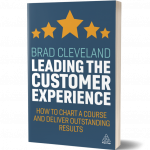We all spend a high percentage of our waking hours working. For most of us, the primary reason is very practical: we require the means to buy the things we need and want. So, in a very real way, work is something we have to do. In that sense, it can carry 
In Why We Work, Barry Schwartz summarized three ways we can relate to work: work as a job, work as a career, or work as a calling.
- Those who view work as a job mainly see it as a paycheck. They don’t receive any kind of reward or fulfillment beyond salary and benefits.
- Those who view work as a career have a higher level of motivation—they want to get better at what they do, take on new responsibilities, and move up in the organization.
- Those who view work as a calling are the most motivated—they understand how the work they do makes a positive difference for others.
The lost jobs and turbulence Covid-19 created likely shook these perspectives up—for a season. Many employees were happy to have, keep, or find work. But as we returned to a sense of normal, fulfillment once again emerged as fundamentally important. Work can and should be fulfilling, both professionally and personally. The underpinning of true employee engagement starts with a perspective: knowing that the work is important, that it is worthwhile. So, a secret to creating an engaging environment is to establish the connection between what your employees do and how it impacts others.

Excerpt from Leading the Customer Experience: How to Chart a Course and Deliver Outstanding Results by Brad Cleveland.



0 Comments